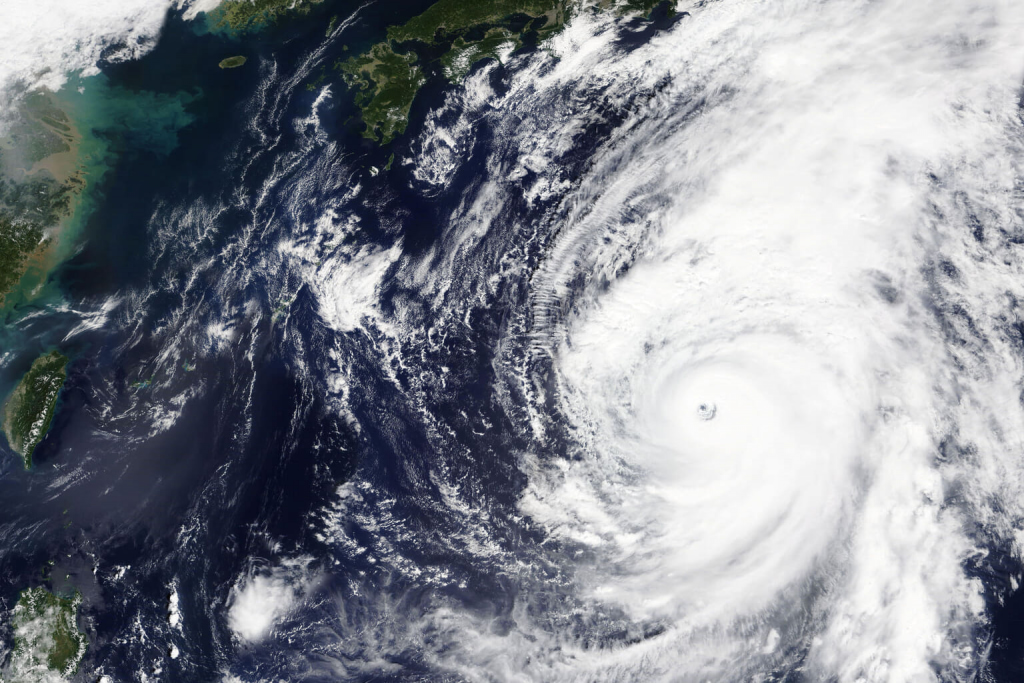Last Sunday, news sources poured out headlines warning Japanese residents about the super typhoon Nanmadol threatening the country. For some, weekend plans were canceled due to heavy rain and wind, but for a whopping nine million others, it meant potential evacuation of their homes.
The World Meteorological Organization (WMO) proclaimed in a tweet that it was “one of the strongest typhoons ever seen,” and the amount of damage and displacement indeed supports this statement. The storm killed at least two and injured over 100 others. Two days after the height of the storm, at least 300,000 people were still without electricity while warnings of landslides and floods were issued. Many areas have been damaged, especially in Miyazaki and Kyushu prefectures.
As people in Japan prepared for the oncoming storm on Earth, astronaut Bob Hines beautifully captured the typhoon from space. In his tweet he expresses the dualism of a natural event so impressive and devastating.
It’s incredible how something that seems so beautiful from space can be so terrible on Earth…Praying for the safety of those in the path of Typhoon Nanmadol. pic.twitter.com/4xambFgtj6
— Bob “Farmer” Hines (@Astro_FarmerBob) September 17, 2022
The Imminent Threat of Climate Change
Typhoon Nanmadol is tied to a chain of other storms and typhoons this season and has had many discussing the imminent effects of climate change. With other natural disasters such as the floods in Pakistan and the heat waves in Europe and China, there is growing concern regarding future extremes and emergencies.
Even though extreme weather isn’t unusual this time of year in Japan, climate change is undoubtedly one of the culprits for the unprecedented danger that Typhoon Nanmadol brought. The rise of temperatures these past years has generated more moisture in the air, which fuels large storms. And according to scientists at Imperial College London and the University of Oxford, extreme rainfall during Typhoon Hagibis in 2019 was likely increased by 67 percent due to human-caused climate change.
Chloe Demrovsky from the Disaster Recovery Institute (DRI) affirms that climate change is worsening the force of natural disasters. She warns that this could especially increase calamity in countries that aren’t as prepared in terms of infrastructure resilience and disaster preparedness as Japan.
9 million people told to evacuate from super typhoon Nanmadol. Japan is among the most prepared countries globally by their infrastructure resilience/national preparedness. Pacific Ring of Fire puts it at high risk which will be worse w/ #climatechange.
https://t.co/qxXt2LG2mN— Chloe Demrovsky (@ChloeDemrovsky) September 19, 2022
How is Climate Change Affecting Japan?
Japan is no stranger to disaster preparedness, yet its aim for carbon neutrality by 2050 seems unlikely at this stage. As one of the countries suffering the most from climate change, with temperatures rising faster than the global average, the lack of urgency on the matter in Japan is significant. A report by WWF notes that the rising temperatures are noticeably affecting agriculture and fishing. Japan has been suffering from a decrease in snowfall and each Spring we see the cherry blossoms bloom a little earlier than the year before. The call to mitigate greenhouse gasses is urgent but unfortunately, this won’t be easy, as the media is heavily influenced by fossil fuel and nuclear industries.
On a positive note, there are some Japanese eco influencers and activists striving to raise awareness and since the Covid-19 pandemic, energy efficiency has increased, since offices have downsized and fewer commuters take the highly packed trains each morning and evening. Yet there is much to do if Japan wants to effectively prevent the drastic effects of climate change we already see happening today in storms like Nanmadol.









